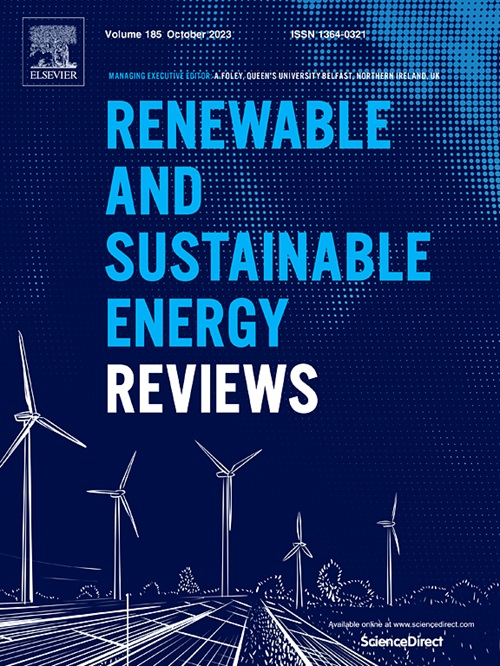基于计算机视觉的风力发电机叶片结构健康监测技术进展
IF 16.3
1区 工程技术
Q1 ENERGY & FUELS
引用次数: 0
摘要
随着风能的快速增长,为了最大限度地提高能源产量,人们开发了更大、更长的叶片的风力涡轮机。然而,叶片尺寸的增加也导致了更高的维修和维护成本,这就需要高效可靠的风力涡轮机叶片结构健康监测技术。计算机视觉技术已经成为解决叶片结构健康监测关键问题的有前途的工具,包括损伤检测、损伤定位、损伤分类和损伤量化。尽管传统的计算机视觉方法和深度学习等先进方法最近都取得了进展,但对风力涡轮机叶片结构健康监测中最有效的计算机视觉技术的全面评估仍然缺乏。这包括考虑任务特定条件,如环境可变性、计算要求和不同叶片损伤的特征。本文分析了用于风力涡轮机叶片结构健康监测的计算机视觉技术的优势和局限性,以及适用于捕获不同叶片损伤的成像模式。本研究还确定了现有的研究差距和未来的研究,以推进基于计算机视觉的风力涡轮机叶片结构健康监测。本文章由计算机程序翻译,如有差异,请以英文原文为准。
Advances in computer vision-based structural health monitoring techniques for wind turbine blades
With the rapid growth of wind energy, larger wind turbines with longer blades have been developed to maximize energy production. However, the increased blade size has also led to higher repair and maintenance costs, which demands efficient and reliable structural health monitoring techniques for wind turbine blades. Computer vision techniques have emerged as promising tools to address the key topics in blade structural health monitoring, including damage detection, damage localization, damage classification, and damage quantification. Despite recent advancements in both traditional computer vision methods and advanced approaches like deep learning, a comprehensive evaluation of the most effective computer vision techniques for structural health monitoring of wind turbine blades remains absent. This includes consideration of task-specific conditions such as environmental variability, computational requirements, and characteristics of different blade damages. This paper analyzes the strengths and limitations of state-of-the-art computer vision techniques for structural health monitoring of wind turbine blades, as well as the imaging modalities applicable to capturing different blade damages. This study also identifies the existing research gaps and future research for advancing computer vision-based structural health monitoring of wind turbine blades.
求助全文
通过发布文献求助,成功后即可免费获取论文全文。
去求助
来源期刊

Renewable and Sustainable Energy Reviews
工程技术-能源与燃料
CiteScore
31.20
自引率
5.70%
发文量
1055
审稿时长
62 days
期刊介绍:
The mission of Renewable and Sustainable Energy Reviews is to disseminate the most compelling and pertinent critical insights in renewable and sustainable energy, fostering collaboration among the research community, private sector, and policy and decision makers. The journal aims to exchange challenges, solutions, innovative concepts, and technologies, contributing to sustainable development, the transition to a low-carbon future, and the attainment of emissions targets outlined by the United Nations Framework Convention on Climate Change.
Renewable and Sustainable Energy Reviews publishes a diverse range of content, including review papers, original research, case studies, and analyses of new technologies, all featuring a substantial review component such as critique, comparison, or analysis. Introducing a distinctive paper type, Expert Insights, the journal presents commissioned mini-reviews authored by field leaders, addressing topics of significant interest. Case studies undergo consideration only if they showcase the work's applicability to other regions or contribute valuable insights to the broader field of renewable and sustainable energy. Notably, a bibliographic or literature review lacking critical analysis is deemed unsuitable for publication.
 求助内容:
求助内容: 应助结果提醒方式:
应助结果提醒方式:


